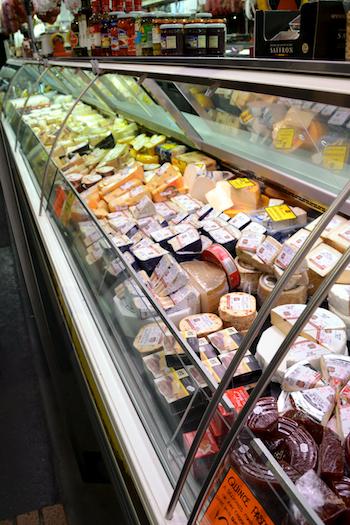Shop til you drop
Duration/age

Getting your child to help you with the shopping involves a little planning. What you would normally do on your own quickly will take more time when you work together.
Make a list together before you go. You could use the junk mail. As you make the list talk about what items will be found.
We need to get milk, cheese and yogurt. They’ll be in the cold section in the last row.
We have run out of fresh fruit. Should we get some bananas, apples, pears and grapes? We can get them first as they are at the front near the entrance.
When you get to the shop talk to your child about what items they can help to find and the size and quantity you need.
I am going to get 3 green apples and you can get a big bunch of red grapes.
As you move around the supermarket talk about where things might be found.
Talk about how things are grouped together that are the same or similar. They might be grouped by use, as with all the cleaning products, or the temperature they need to be stored at, as with all the frozen food. Will they be located high on a shelf in rows or stacked one on top of each other on the floor?
If you don’t know where to find something how can you help your child to work it out?
We have run out of baked beans but I'm not sure where to find them. I think they will be with the pasta sauce, but the sign at the end of the row will tell us.
Materials you will need
- Shopping list
Alternative tools
- Junk mail
Skills this activity improves
Why does this matter?
When children help with shopping they are learning to group and sort objects and to notice the difference between objects. As they group and sort they are experimenting with language and vocabulary to describe why they have placed an object into a particular group.
Taking a part in doing the shopping helps children to experiment with moving about within a confined space and to follow directions involving place and position.
When children help to find objects they are developing their measurement skills and noticing different ways we can talk about and describe size, capacity and weight.
What does this lead to?
Taking a part in shopping helps to build your child's language, listening and observation skills.
When children help with the shopping they are using language to measure and classify objects. They are learning that objects can be measured by weight or number. As they find the different items on the shopping list they are noticing that something can weigh the same as another object but look quite different.
Language to use
- Tin, jar, can, packet, bag, tub, bunch
- Small, large, medium
- Weight, size, kilo, grams, litre
- Entrance, exit, cold section, freezer section, deli section, dairy compartment, row
- Bag, trolley, basket
Questions to use
- Where will we find the cold food?
- Is the ice-cream kept with the milk?
- Are all of the cold foods stored together?
- Are all of the tomato products together?
- What will we buy in a tin?
- What comes in a packet?
Useful tips
- Try cutting out pictures from the junk mail to make a visual shopping list.
- Let your child have their own list and trolley.
- You might also like to take a look at the Exploring junk mail activity.
- Remember to talk to your child in your home language.
More ideas
- Make a shopping bingo card of what you are going to purchase.
- Make a map that shows where to find the different items in the shop.
Variation by age
Three to five year olds
- Sort the shopping list into different groups and categories.
- Make a weight game. Can you match and sort items that weigh the same?
- Create a shopping treasure map.
- Make your own shopping game at home using the junk mail.
Questions to ask
- Is a banana a fruit or a dairy product?
- Does a kilo of bananas weigh the same as a kilo of sugar?
- Cheese is a dairy product - what else is?
- What can we buy in a jar? What can we buy in a tube?
Language to use
- Fruit, vegetable, dairy, meat, processed food, bread, rice, pasta
- Tube, jar, container, tub, bunch
- Weight, quantity, amount, size
- Direction, instruction, shelf, row


